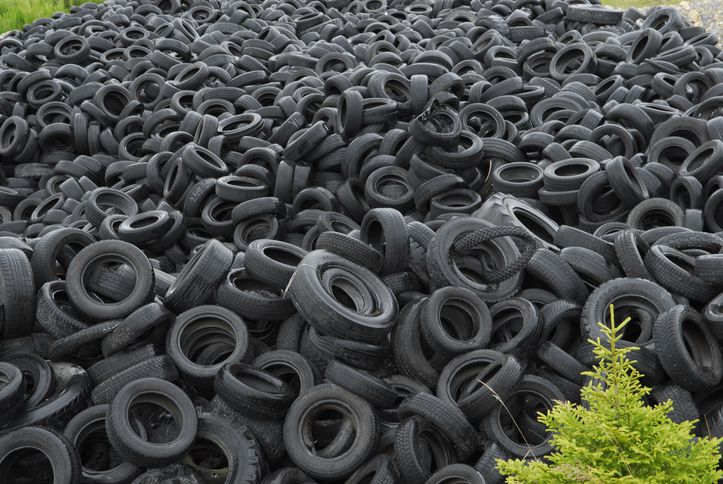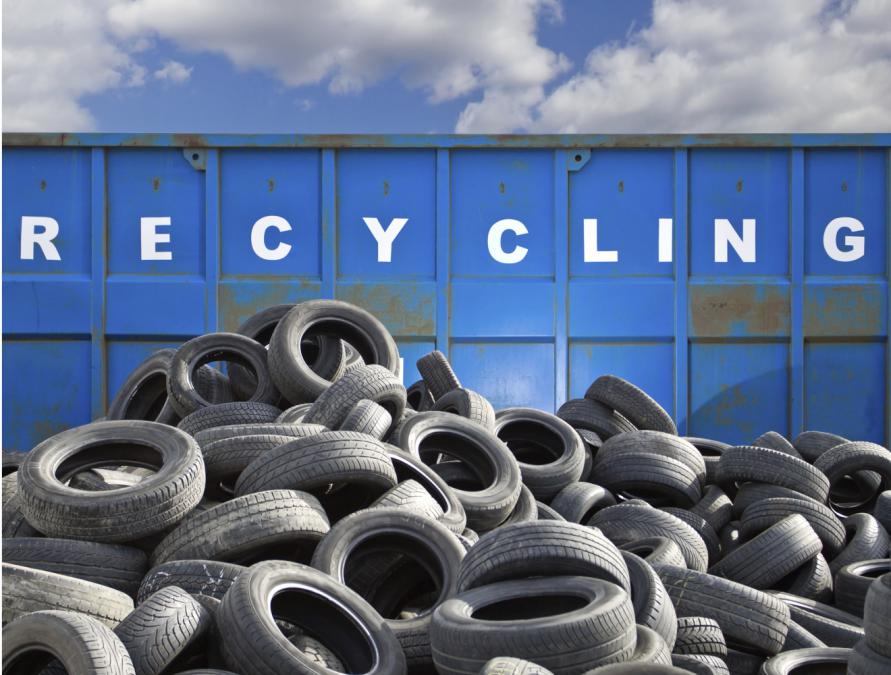A recent study showed that tires release toxic chemicals into the natural environment, which is extremely toxic to humans. So, how can tires be recycled to reduce the pollution?
How Does Old Tires Impact on the Environment?
Waste tires take thousands of years, but they are not necessarily biodegradable. There are three horrible impacts of old tires on our environment. The details are as follow:
Osmosis - Waste tires contain heavy metals and chemicals that seep into the atmosphere as the tires disintegrate. It is called osmosis.
Some of these chemicals have been recognized as mutagenic and carcinogenic.
Another threat is soil pollution. The soil around such old tires can easily be contaminated with toxic chemicals released into the environment. Even groundwater is at risk of contamination.
Also, if these toxins contaminate any water in the soil, the contaminated water can come into contact with animals and humans and be life-threatening.
- Landfill overload - Our landfill is finite. Waste tires form a large block of waste in these landfills. Many countries are struggling with this issue.
Many have banned the handling of all types of tires. And all need to be processed and transformed into small pieces before delivered to the landfills. So, besides environmental and health reasons, you can now also have legal bases for recycling tires.
- Fire hazard - One of the main concerns in the case of discarded automobile tires is the increased fire risk. Nearly half of all recycled scrap tires are used in fuel production. However, fires originating by tires can be harder to handle and extinguish.
- Pest threat - Scrap tires are also pests. Water can accumulate in these tires, and they can become a breeding ground for mosquitoes and other pests. It can increase the risk of infectious diseases such as encephalitis. Even rodents can live in the throw-away tires. Therefore, to eliminate potential health hazards, it is best to recycle used tires.

Old tires can badly impact to the environment.
Benefits of Recycling Tires
Minimize Space for Landfills
Tires occupy a lot of space in landfills due to their round, hollow shape. Landfill space is limited, so removing large bulky items takes up more space than needed for other things that cannot be easily recycled.
Create New Useful Products
Recycled tires are turned into many useful products. Natural products of recycled tires are rubber flooring, rubber bricks, and rubber mats. With the preeminent features of anti-vibration, anti-shock, sound absorption, force absorption, no fade, waterproof, and anti-slip, these products really became a useful recycled product.
Other products made from recycled tires include rubber tar, railway ties, and playgrounds. These products are not just an excellent way to reuse old tires; but also are better than their healthy alternatives. For example, rubber bitumen is more durable and provides better skid resistance than conventional paving materials.
Many skillful artisans have also created their useful products from recycled tires. They used tires for gardeners, family playground equipment, and outdoor furniture. Even when recycling tires does not create new products, it is an excellent way to create useful materials. Many tires contain steel, fiber, and nylon needed in other industries.
Preventing the Spread of Disease
Used discarded tires provide homes for disease-carrying rodents. Eliminate tire waste, and help prevent the spread of disease, avoid fire and pollution.
Another problem with discarded old tires is fire. Tire fires are more problematic than other lights because they are particularly difficult to extinguish and result in dense black smoke. Pollution from tire fires can contaminate water and soil in surrounding areas, so damage lasts for years to come. Recycle your old tires, so they don't become a fire hazard.
Where to Recycle Tires?
To be able to carry a large load, car tires are constructed quite complicated. Besides natural rubber (about 19%), there is also synthetic rubber (nearly 40%), synthetic polymer webbing belt, metal wire, sealant with reinforcing task, and some other materials.
Where to recycle tires for free? After the expiry date, tires are often gathered in landfills and left to decompose naturally (the process can take hundreds of years). Besides, they are also used as fuel. A few are reused into DIY products such as swings, tables, planters, etc.
Also, about 26% of the tire will be recycled into scrap rubber material (often used as insulation, artificial turf, etc.), and this is also one of the most environmentally friendly and efficient ways to recycle old tires we have at the moment.

After the expiry date, tires are often gathered in landfills and left to decompose naturally
How Can Tires Be Recycled?
In Germany, there are 630,000 tons of scrap tires every year. This figure in Europe is 3.2 million tons and 4.4 million tons of the whole US. So what actually happened? As recycling of used tires is not economically viable, some are either burned to the cement industry, and the remaining amount is still in landfills all over the world. However, the companies of Zeppelin and Pyrolyx have a closed production system whereby scrap tires are fully recyclable.
Mr. Rolf - Hendrik Arens, Deputy General Manager of Communications & Investor Relations of Pyrolyx Company, said that handling used tires is not an easy matter. For example, in the European Union, tire waste has long been banned.
However, within the EU, about 4% of scrap tires still have to land at landfills or illegally dump. In other parts of the world, this problem is much worse. The use of old tires as fuel is of little significance. Moreover, raw materials such as rubber and oil to produce synthetic rubber and black carbon (carbon paracrystalline form) need to be used to create new tires continuously.
So, how long will the carbon, metal, and energy reserves last? The use of expired tires for asphalt or surfactants does not reduce the consumption of natural resources. Only when the recycling is practical, can the raw materials circulate, recover, and recycle, then reduce the use of natural resources.
Precious Raw Material
A few years ago, Pyrolyx set a goal of recycling in a closed loop. In addition to promoting the green standard of the tire industry, it makes financial sense. Each car tire contains 2 to 3 kg of black carbon - the substance used in the field of dyeing, tires, rubber, and synthetic materials.
In 2011, global demand for black coal reached 11 million tons, and experts predict that it will increase by 4% per year. The cost per ton of this "industrial coal" is about EUR1,200 depending on the quality and price of oil. And it usually costs about 1.7 tons of fossil fuels (oil and gas) to produce each ton of carbon black.
In the past, recovering black carbon from the same product was not possible, or at least trying, in a continuous process with closed recycling. Many developers and engineers work to extract this valuable material from expired tires and then recycle it by using it to produce new rubber products. In a pilot plant in the Netherlands, Pyrolyx and the project partner of Zeppelin Systems successfully recovered oil, gas, and above all, high-quality carbon black from used tires.
Two-Stage Process
In the Pyrolyx process, the tires are processed into raw materials suitable for industrial use, enabling high-quality black carbon to be regenerated. For this purpose, Pyrolyx technology combines pyrolysis with polymerization disinfection.
In the first stage of recycling, the tires are torn and separated from the steel and wire, and then form rubber raw materials for the recycling plant. Only standard nuts from used tires and purchased from selected suppliers are used.
The Pyrolyx process requires the dissolution of organic compounds in vulcanized rubber granules at a temperature of 350 to 700°C under zero oxygen. The material is kept for 7 hours in the factory and is divided into zones with different temperatures and processing states.
Gas is drawn and passed through the condenser. Their volatile organic components will liquefy and then released at different rates of oil. The ratio and composition depend on temperature, length of stay, and other aspects of the process.
They can be sold as valuable raw materials, either further processed or used as fuel to produce black carbon. Once they have been ultimately released by condensation analysis, the collected gas is comparable to natural gas and can be used to generate electricity. Only the remaining is called the Pyrolyx Black Carbon.
It is taken to the cooling area, at a temperature of about 50°C. Then put into silos and mill for particle size less than 5μm after that is packed and sold.
In-Depth Testing
Back in late 2009, a detailed survey study was conducted on Pyrolyx technology by experts from Bayer Technology Services in Leverkusen, Germany. They appreciate it commercially. They found that the end product was a sustainable material that met standards like traditional black carbon and could thus be machined expertly.
Financial analysis shows that the production of Pyrolyx black carbon black cheaper than that of traditional carbon production. It depends heavily on oil prices and is also an ideal filler for the rubber industry and plastic. Pyrolyx Black Carbon is revealed to be better for the environment due to lower emissions during manufacturing.
Since 2012, Pyrolyx has conducted quality and in-depth tests at a factory-built, specifically in Drunen, Netherlands. This pilot plant is designed to allow continuous production of carbon black. Power, energy, output, and quality of black carbon are achieved. The test meets the high expectations of the company.
Final Words
Old giant car tires can cause many environmental problems because they contain large quantities of metal. However, removing them is difficult and costly. Hence, knowing how can tires be recycled is extremely useful to reduce the above risks of old tires.